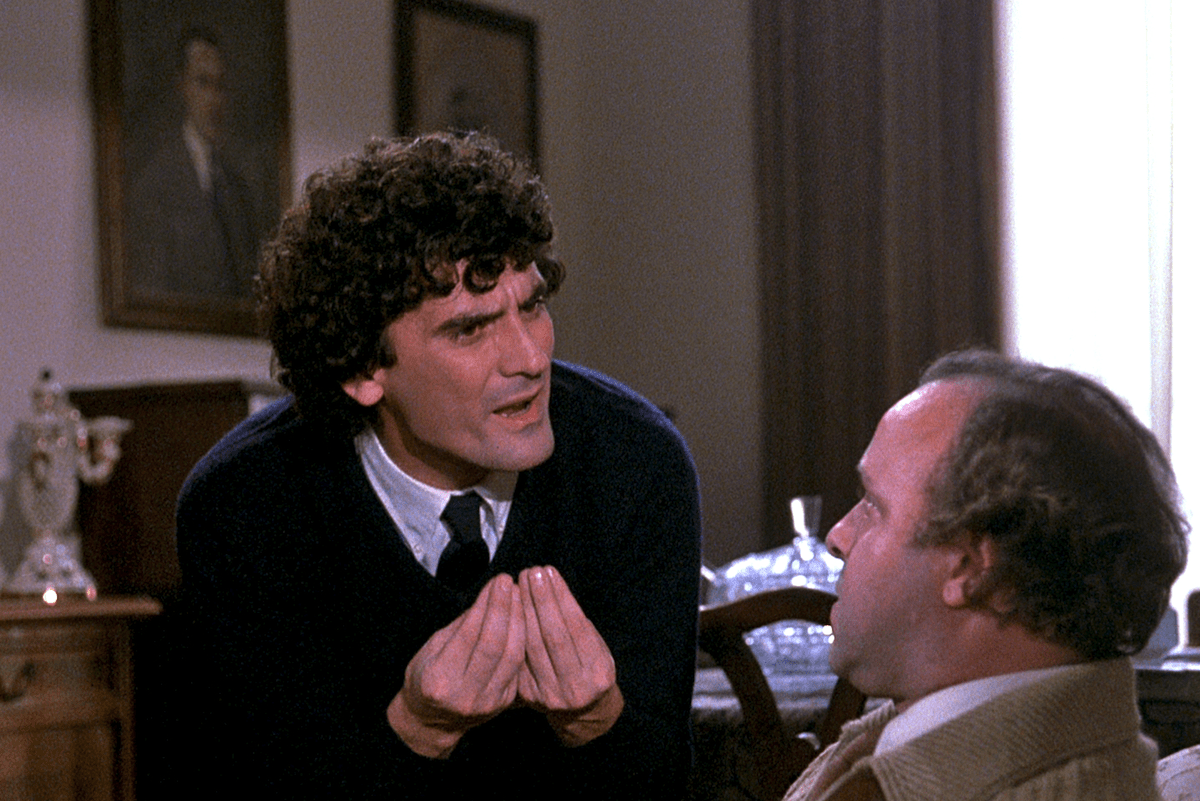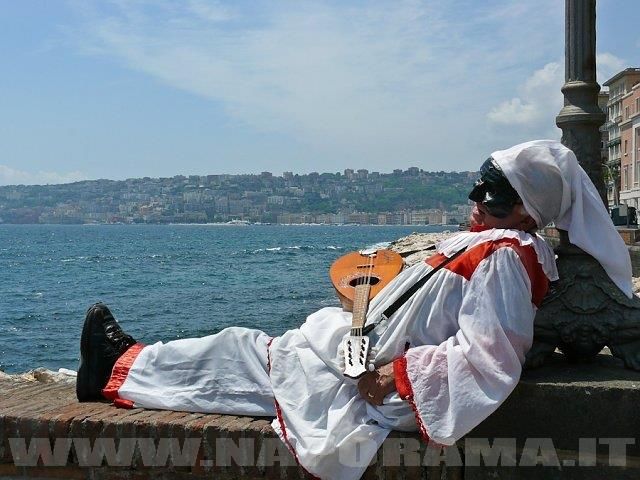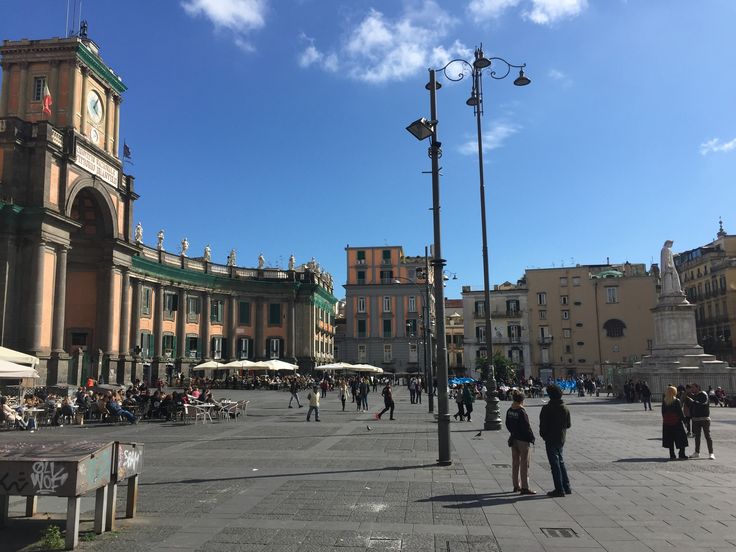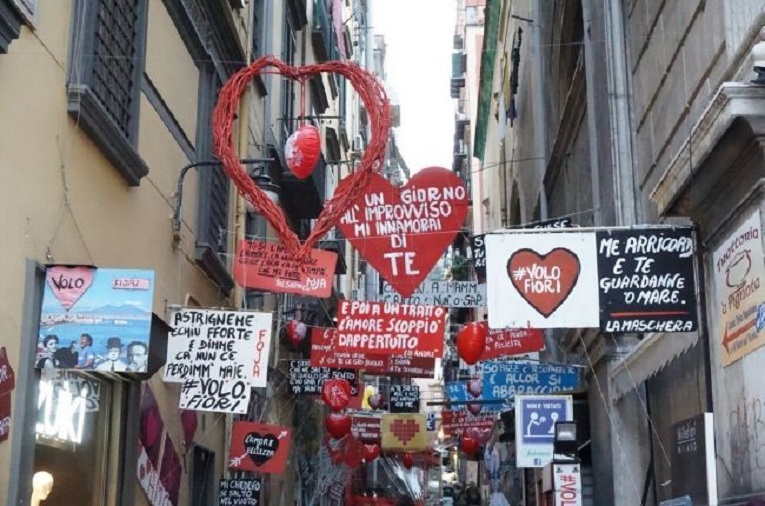
Are you in Naples for a weekend and don’t know what to do? No problem, I’m here to give you some advices about the places you totally can’t miss if you’re spending a little time in the biggest city of Southern Italy. First of all Naples is pretty connected by two subway lines and 4 funiculars. You may use Garibaldi Station as main point of interest. It is the central station of Naples and both Linea 1 and Linea 2 coincide in this point. A good idea can be to take metro line 1, to get off at the Toledo stop (nominated the most beautiful metro stop in Europe), or at the Municipio one, and then simply walk, letting yourself be inebriated by the unique Neapolitan atmosphere.
Via Toledo
Via Toledo is the it is the main commercial street of the city. During his stay in Naples, Herman Melville said that for the crowd of people passing through via Toledo, it would have been impossible to distinguish it from Brodway. Via Toledo connects the Seafront area to the historic center of Naples and runs alongside the famous Quartieri Spagnoli. Along via Toledo, in addition to clothing shops and kiosks of the famous Neapolitan street food, there is one of the entrances to the imposing Galleria Umberto I. Via Toledo is mentioned in the well-known Neapolitan song by Renato Carosone “Tu vuò fa l’americano“.
The lower part of Via Toledo flows into Piazza Plebiscito.
It is the biggest square in Naples and one of the biggest in Italy. It is the point of union Seafront and Toledo Street. The high part of the square is surrounded by the columns of Basilica di San Francesco di Paola, a church considered one of the most important examples of neoclassical architecture in Italy. In front of the church there are the two imposing equestrian statues of Charles III of Bourbon and Ferdinand I of the Two Sicilies. On the square’s botton there’s the Naples Royal Palace, residence of the Spanish and then Austrian viceroys, and afterwards of the Bourbon dynasty until 1815. In the main entrance’s wall it’s possible to see the statues of the main Naples’ kings. The palace is linked to San Carlo Theater, which was founded in 1737, and it is the oldest opera house in the world still active. Just across the square to get into the most beautiful part of the city: Mergellina Seafront.

Mergellina Seafront
Naples is known has “the city of the sea and the sun”. Mergellina’s seafront will let you understand why. It is one of the most beautiful streets in Italy. It is a 3 km path whitch runs above Naples’ Gulf. It links the port area to Posillipo neighborhood. Along this walk, and more precisely in Piazza Municipio, it will be possible to visit Castel Nuovo, a medieval stronghold dating back to the thirteenth century built by King Charles I of Anjou. Carrying on it will be possible to get to Castel dell’Ovo.
It is the oldest castle in the city of Naples, built up in Roman era. It is setteled on the Megaride Island, and it can be reached and visited via a bridge whitch connects the mainland to Borgo Marinari. Further on you will reach the Villa Comunale, the main green lung of the Chiaia district and the so-called “Lido Mappatella” beach. This is probably the favorite destination for joggers. The route ends in Mergellina marina, a place famous for its fishing port and its famous chalets. Along the entire route it will be possible to see Vesuvius, the Sorrento coast and the island of Capri. The seafront of Mergellina inspired Giovanni Capurro to compose the famous neapolitan song “‘O Sole mio” (My Sun). Naples looks to west, facing the direction of the sun. This is why Naples is known as “‘O paese d’o Sole” (The village of the sun).

Quartieri Spagnoli
The Quartieri Spagnoli are the most famous popular area of the city. It is the real beating heart of the town. It is a network of alleys so narrow that it is almost impossible to see the sun. This attribute inspired the popular ballad “La città di Pulcinella“, referring to Pulcinella, the Carnival Mask which represents the city. The Quartieri Spagnoli are full of spritz bars and typical trattorias, such as the famous Cammarota Spritz and Trattoria Nennella. This area is characterized by a frenetic nightlife. Quartieri Spagnoli is also well known for its spectacular streetart, which represents characters who have written the history of the city, such as the actors Totò and Massimo Troisi, the singer- songwriter Pino Daniele, and of course the footballer Diego Armando Maradona. In one of the highest part of the neighborhood there’s the Diego Maradona Mural.

Centro Storico for weekend in Naples
The historic center of Naples contains three millennia of history and it is one of the largest in Europe. Its monuments testify to the succession of cultures of the Mediterranean. a portion of the historic center was declared a UNESCO World Heritage Site in 1995. A good starting point can be Piazza Dante, a big square which has a statue of Dante Alighieri in the middle. The square is located at the top of via Toledo, but it’s easily reachable also through the Dante stop of Line 1 or Montesanto stop Line 2.
The most interesting parts to visit in this area ar the two parallel streets Via Spaccanapoli and Via dei Tribunali. Via Spaccanapoli is a straight line of more than one kilometer, narrow and vociferous, which divides the huge agglomeration in two halves “Spaccare” means litteraly “to split”. Along the road, which runs alongside Piazza Dante, you can find places of interest, such as the church of Santa Chiara, piazza San Domenico Maggiore and the chapel of San Severo houses the wonderful marble sculpture of the Veiled Christ.
The parallel Via dei Tribunali to Spaccanapoli connects Piazza Bellini, a site known for its nightlife to the Forcella district. Via dei Tribunali is a lively street, famous for its renowned pizzerias. Along this road you will reach the portico of the Palazzo D’Angiò, the Girolamini church. Still along this street there’s Piazza San Gaetano, which marks the entrance to one of the underground sites of Naples. In Particular from here it can be reached the Greco Roman Aqueduct and the Theater. Both the ways intersect with Via Duomo, which is the house of the cathedral Duomo di San Gennaro, patron and protector of the city.

Castel Sant’Elmo
Through the funiculars of Montesanto, Toledo and Chiaia, but also to Metro Line 1, at the Vanvitelli stop, it is possible to reach the Vomero district. This is a fancy area with many fashion stores and pubs, in which is really pleasant to walk. The highest part is worthy of interest, where is located the Castel Sant’Elmo, easily accessible also thanks to an escalator system. The castle dates back to the 14th century and overlooks the entire city. Next to the stronghold there is the Certosa di San Martino, a monastery which is often used as an art gallery. The view from this point is wonderful. Naples is connected: from here, through the steps of the petraio it will be possible to return quickly to the Quartieri Spagnoli.
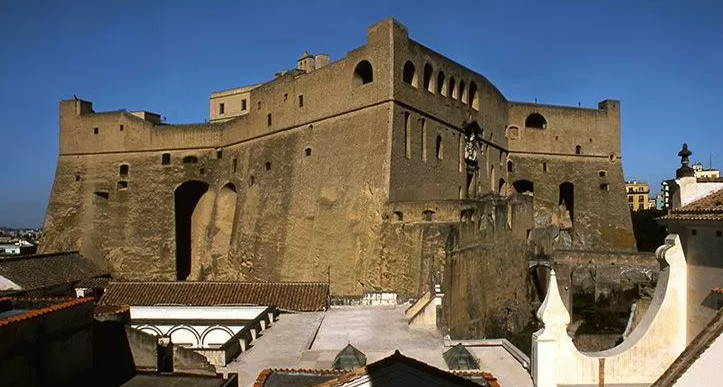
Last stop for weekend in Naples: Stadio Maradona
If we talk about Naples, we cannot fail to mention its football facility, if you have the opportunity, it is recommended to experience the Stadium. The Diego Armando Maradona stadium, formerly known as San Paolo, is without a doubt the hottest place in the city. It’s located in the Fuorigrotta district and can be easily reached with Line 2, getting off at the Campi Flegrei stop, it has a capacity of 55,000 spectators. Naples is a city that lives in symbiosis with its team, being the only professional team in the municipality. Precisely for this reason the average fan does not belong to a specific class: Napoli confuses and compacts very different people, it is everyone’s team. The cheering reaches such peaks, that on some occasions the scream of the fans at the goal has been recorded as an earthquake by the seismographs of the Federico II University.


